Instruments Voice Children Marcelle Dupont Role Singer | Name Edith Piaf Years active 1935–63 | |
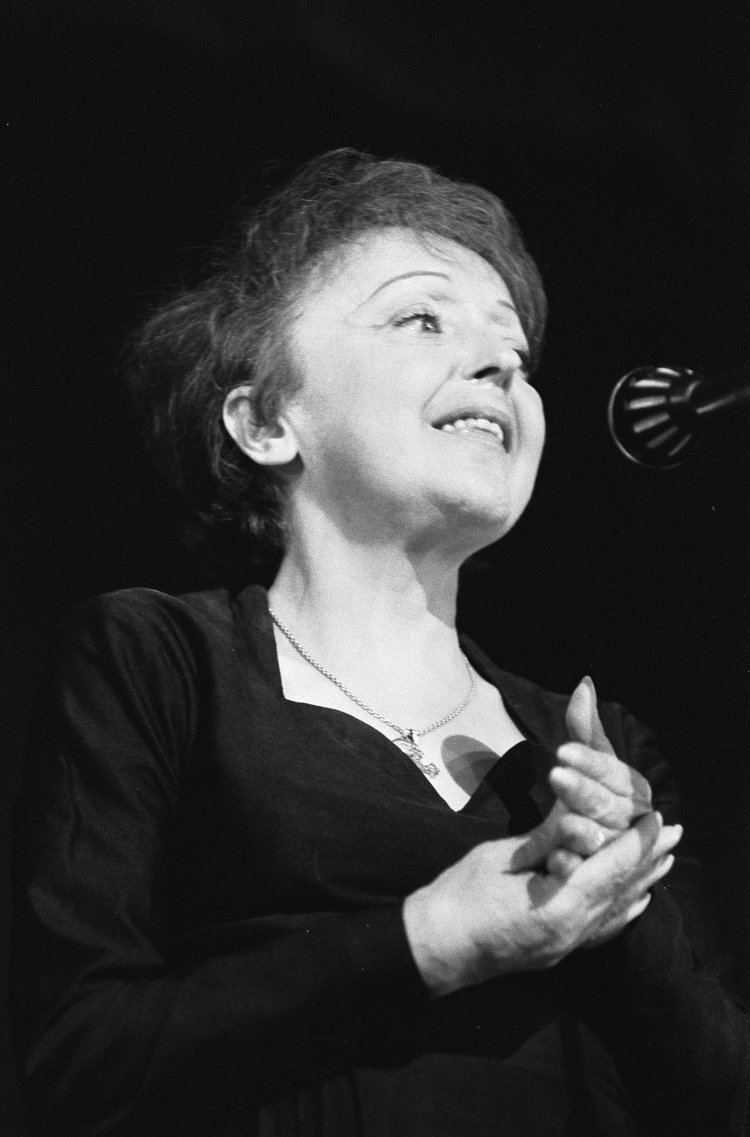 | ||
Full Name Edith Giovanna Gassion Other names La Mome Piaf(The Little Sparrow) Occupation French cabaret singersongwriteractress Genres CabaretTorch songsChansonMusical theatre Labels Pathe, Pathe-MarconiCapitol (US and Canada) Died October 10, 1963, Alpes-Maritimes, France Similar Theophanis Lamboukas, Jacques Pills, Marcel Cerdan | ||
Edith piaf biography 1 of 4
Édith Piaf ([edit pjaf]; 19 December 1915 – 10 October 1963; born Édith Giovanna Gassion) was a French cabaret singer, songwriter and actress who became widely regarded as France's national chanteuse, as well as being one of France's greatest international stars.
Contents
- Edith piaf biography 1 of 4
- Edith piaf biography 4 of 4
- Family
- Early life
- Singing career
- Role during the German occupation
- Personal life
- Death and legacy
- In popular culture
- Films about Piaf
- Songs
- Filmography
- Theatre credits
- Discography
- On DVD
- Quotes
- References

Her music was often autobiographical with her singing reflecting her life, and her specialty being chanson and torch ballads, particularly of love, loss and sorrow. Among her well-known songs are "La Vie en rose" (1946), "Non, je ne regrette rien" (1960), "Hymne à l'amour" (1949), "Milord" (1959), "La Foule" (1957), "L'Accordéoniste" (1955), and "Padam ... Padam ..." (1951).
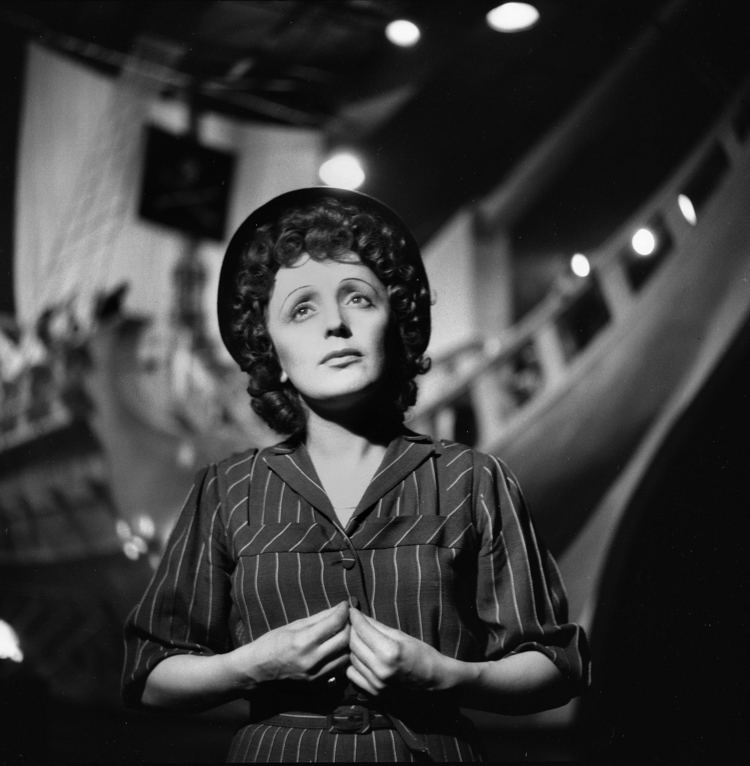
Since her premature death in 1963 and with the aid of several biographies and films including 2007's Academy Award winning La Vie en rose, Piaf has acquired a legacy as one of the greatest performers of the 20th century, and her voice and music continue to be celebrated globally.
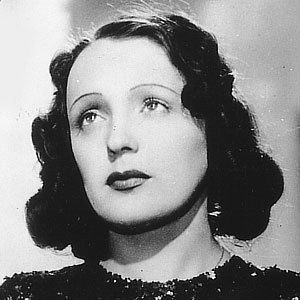
Edith piaf biography 4 of 4
Family
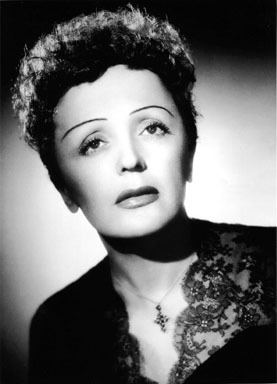
Despite numerous biographies, much of Piaf's life is unknown. She was born Édith Giovanna Gassion in Belleville, Paris. Legend has it that she was born on the pavement of Rue de Belleville 72, but her birth certificate cites that she was born on 19 December 1915 at the Hôpital Tenon, a hospital located at the 20th arrondissement.
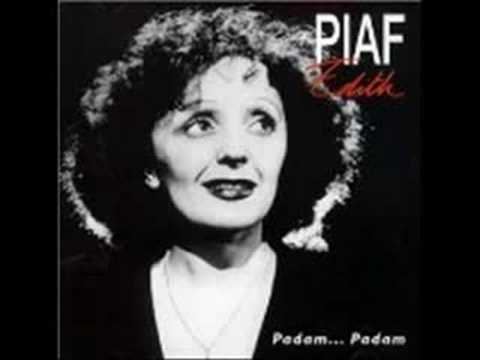
She was named Édith after the World War I British nurse Edith Cavell, who was executed for helping French soldiers escape from German captivity. Piaf – slang for "sparrow" – was a nickname she received 20 years later.
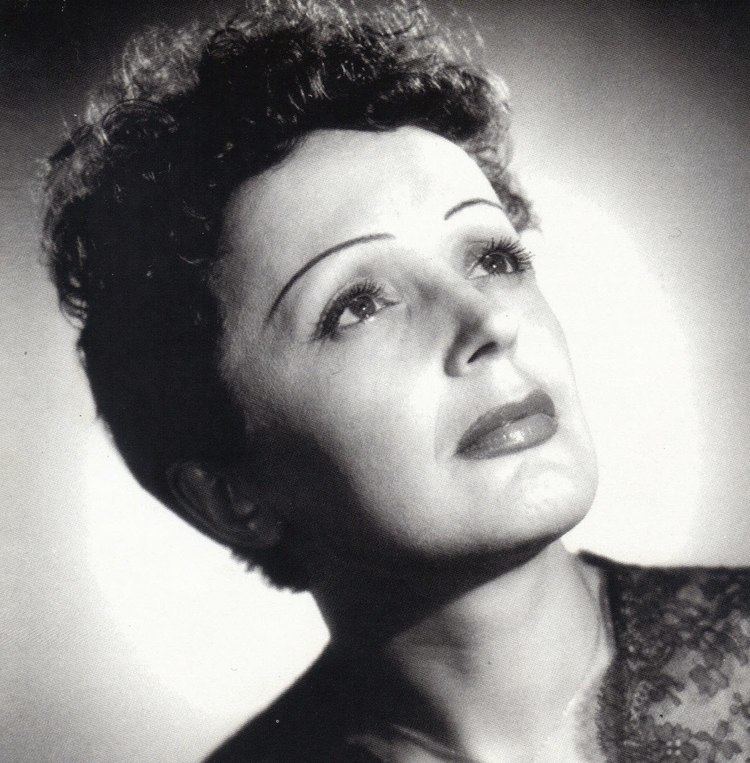
Louis Alphonse Gassion (1881–1944), Édith's father, was a street performer of acrobatics from Normandy with a past in the theatre. He was the son of Victor Alphonse Gassion (1850–1928) and Léontine Louise Descamps (1860–1937), known as Maman Tine, a "madam" who ran a brothel in Bernay in Normandy.
Her mother, Annetta Giovanna Maillard (1895–1945) was of French descent on her father's side and of Italian and Algerian Chaoui origin on her mother's, and she was a native of Livorno, Italy. She worked as a café singer under the name Line Marsa. Her parents were Auguste Eugène Maillard (1866–1912) and Emma (Aïcha) Saïd ben Mohammed (1876–1930), daughter of Said ben Mohammed (1827–1890), a Moroccan acrobat born in Mogador, Morocco, and Marguerite Bracco (1830–1898), born in Murazzano in Italy. She and Louis-Alphonse divorced on 4 June 1929.
Édith had a younger brother, Herbert, who was born on 31 August 1918 in Marseille. There is not much information on him or his life. He died on 22 January 1997, in Clichy. Édith also had a younger half-sister, Dénise, born in 1931. Denise is still living, and is known to have married a man named Roger Brossard. She is the daughter of Louis-Alphonse Gassion, and his second wife, Jeanne L'Hôte, who married a year after her birth.
Early life
Piaf's mother abandoned her at birth, and she lived for a short time with her maternal grandmother, Emma (Aïcha). When her father enlisted with the French Army in 1916 to fight in World War I, he took her to his mother, who ran a brothel in Normandy. There, prostitutes helped look after Piaf. The bordello had two floors and seven rooms, and the prostitutes were not very numerous, "about ten poor girls" as she later described, in fact five or six were permanent and a dozen for market and any busy days. The sub-mistress of the whorehouse, "Madam Gaby" could be considered a little like family since she became godmother of Denise Gassion, the half-sister born in 1931. Edith believed her weakness for men came from mixing with prostitutes in her grandmother's brothel. "I thought that when a boy called a girl, the girl would never refuse" she would say later.
From the age of three to seven, Piaf was allegedly blind as a result of keratitis. According to one of her biographers, she recovered her sight after her grandmother's prostitutes pooled money to accompany her on a pilgrimage honouring Saint Thérèse of Lisieux. Piaf claimed this was the result of a miraculous healing.
In 1929, at age 14, she joined her father in his acrobatic street performances all over France, where she first sang in public. At the age of 15, Piaf met Simone "Mômone" Berteaut, who may have been her half-sister, and who became a companion for most of her life. Together they toured the streets singing and earning money for themselves. With the additional money Piaf earned as part of an acrobatic trio, she and Mômone were able to rent their own place. Piaf later separated from her father and took a room at Grand Hôtel de Clermont (18 rue Veron, Paris 18ème), working with Mômone as a street singer in Pigalle, Ménilmontant, and the Paris suburbs (cf. the song "Elle fréquentait la Rue Pigalle").
In 1932, she met and fell in love with Louis Dupont. Within a very short time, he moved into their small room, where the three lived despite Louis' and Mômone's dislike for each other. Louis was never happy with the idea of Piaf's roaming the streets, and continually persuaded her to take jobs he found for her. She resisted his suggestions, until she became pregnant and worked for a short while making wreaths in a factory.
In February 1933, the 17-year-old Piaf gave birth to her daughter, Marcelle (nicknamed Cécelle) at the Hôpital Tenon. Like her mother, Piaf found it difficult to care for a child while living a life of the streets, as she had little maternal instinct, parenting knowledge, or domestic skills. She rapidly returned to street singing, until the summer of 1933, when she opened at Juan-les-Pins, Rue Pigalle.
Following an intense quarrel over her behavior, Piaf left Louis Dupont (Marcelle's father) taking Mômone and Marcelle with her. The three stayed at the Hôtel Au Clair de Lune, Rue André-Antoine. During this time, Marcelle was often left alone in the room while Piaf and Mômone were out on the streets or at the club singing. Dupont eventually came and took Marcelle away, saying that if Édith wanted the child, she must come home. Like her own mother, Piaf decided not to come home, though she did pay for childcare. Marcelle died of meningitis at age two. It is rumored that Piaf slept with a man to pay for Marcelle's funeral.
Singing career
In 1935, Piaf was discovered in the Pigalle area of Paris by nightclub owner Louis Leplée, whose club Le Gerny's off the Champs-Élysées was frequented by the upper and lower classes alike. He persuaded her to sing despite her extreme nervousness, which, combined with her height of only 142 centimetres (4 ft 8 in), inspired him to give her the nickname that would stay with her for the rest of her life and serve as her stage name, La Môme Piaf (Paris slang meaning "The Waif Sparrow" or "The Little Sparrow"). Leplée taught her the basics of stage presence and told her to wear a black dress, which became her trademark apparel. Later, she would always appear in black. Leplée ran an intense publicity campaign leading up to her opening night, attracting the presence of many celebrities, including actor and singer Maurice Chevalier. Her nightclub gigs led to her first two records produced that same year, with one of them penned by Marguerite Monnot, a collaborator throughout Piaf's life and one of her favourite composers.
On 6 April 1936, Leplée was murdered. Piaf was questioned and accused as an accessory, but acquitted. Leplée had been killed by mobsters with previous ties to Piaf. A barrage of negative media attention now threatened her career. To rehabilitate her image, she recruited Raymond Asso, with whom she would become romantically involved. He changed her stage name to "Édith Piaf", barred undesirable acquaintances from seeing her, and commissioned Monnot to write songs that reflected or alluded to Piaf's previous life on the streets.
In 1940, Piaf co-starred in Jean Cocteau's successful one-act play Le Bel Indifférent. The German occupation of Paris didn't stop her career, to the contrary, she began forming friendships with prominent people, including Chevalier and poet Jacques Bourgeat. She wrote the lyrics of many of her songs and collaborated with composers on the tunes. Spring 1944 saw the first cooperation and a love affair with Yves Montand in the Moulin Rouge.
In 1947, she wrote the lyrics to the song "Mais qu’est-ce que j’ai ?" (music by Henri Betti) for Yves Montand. Within a year, he became one of the most famous singers in France. She broke off their relationship when he had become almost as popular as she was.
During this time, she was in great demand and very successful in Paris as France's most popular entertainer. After the war, she became known internationally, touring Europe, the United States, and South America. In Paris, she gave Atahualpa Yupanqui (Héctor Roberto Chavero) – a central figure in the Argentine folk music tradition – the opportunity to share the scene, making his debut in July 1950. She helped launch the career of Charles Aznavour in the early 1950s, taking him on tour with her in France and the United States and recording some of his songs. At first she met with little success with U.S. audiences, who regarded her as downcast. After a glowing 1947 review in the New York Herald Tribune by the influential New York critic Virgil Thompson, himself a contributor to international avant garde culture, however, her popularity grew, to the point where she eventually appeared on The Ed Sullivan Show eight times and at Carnegie Hall twice (1956 and 1957).
Piaf's signature song, "La Vie en rose", was written in 1945 and was voted a Grammy Hall of Fame Award in 1998.
Bruno Coquatrix's famous Paris Olympia music hall is where Piaf achieved lasting fame, giving several series of concerts at the hall, the most famous venue in Paris, between January 1955 and October 1962. Excerpts from five of these concerts (1955, 1956, 1958, 1961, 1962) were issued on record and CD and have never been out of print. The 1961 concerts, promised by Piaf in an effort to save the venue from bankruptcy, debuted her song "Non, je ne regrette rien". In April 1963, Piaf recorded her last song, "L'Homme de Berlin".
Role during the German occupation
Piaf's career and fame gained momentum during the German occupation of France. She performed in various nightclubs and brothels, which flourished during the 1940–1945 Années Erotiques (book title of Patrick Buisson, director of the French history channel) Various top Paris brothels, including Le Chabanais, Le Sphinx, One Two Two, La rue des Moulins, and Chez Marguerite, were reserved for German officers and collaborating Frenchmen. In 1942, Piaf was able to afford a luxury flat in a house in the fancy 16th arrondissement of Paris, (today rue Paul-Valéry) She lived above the L'Étoile de Kléber, a famous nightclub and bordello close to the Paris Gestapo headquarters. Friends joined her, just for the reason that she had access to heating materials. She was, for example, invited to take part in a concert tour to Berlin, sponsored by the German officials, together with artists such as Loulou Gasté, Raymond Souplex, Viviane Romance and Albert Préjean.
Piaf was deemed to have been a traitor and collaboratrice. She had to testify before a purge panel, as there were plans to ban her from appearing on radio transmissions. However, her secretary Andrée Bigard, a member of the Résistance, spoke in her favour after the liberation. According to Bigard, photos made during Piaf's repeated concerts in POW camps allowed falsifying documents to be used to assist French soldiers in their escape attempts. Piaf was quickly back in the singing business and then, in December 1944, she went on stage for the Allied forces together with Montand in Marseille.
Personal life
Except for her daughter Marcelle who she had at age 17, and who died aged two, Piaf neither wanted nor had other children.
The love of Piaf's life, the married boxer Marcel Cerdan, died in a plane crash in October 1949, while flying from Paris to New York City to meet her. Cerdan's Air France flight, on a Lockheed Constellation, crashed in the Azores, killing everyone on board, including noted violinist Ginette Neveu. Piaf and Cerdan's affair made international headlines, as Cerdan was the former middleweight world champion and a legend in France in his own right.
In 1951, Piaf was seriously injured in a car crash along with Charles Aznavour, breaking her arm and two ribs, and thereafter had serious difficulties arising from morphine and alcohol addictions. Two more near-fatal car crashes exacerbated the situation. Jacques Pills, a singer, took her into rehabilitation on three different occasions to no avail.
Piaf married Jacques Pills (real name René Ducos), her first husband, in 1952 (her matron of honour was Marlene Dietrich) and divorced him in 1957. In 1962, she wed Théo Sarapo (Theophanis Lamboukas), a Greek hairdresser-turned-singer and actor who was 20 years her junior. The couple sang together in some of her last engagements.
Piaf lived in Belleville, Paris, with her parents from 1915 to 1934. From 1934 to 1941, she lived at 45 rue de Chézy in Neuilly-sur-Seine; she lived alone from 1941 to 1952 and with Jacques Pills from 1952 to 1956. She continued to live there alone from 1956 to 1959. In her final years she lived at 23 rue Édouard Nortier in Neuilly-sur-Seine – alone from 1959 to 1962 and with Théo Sarapo from 1962 until her death in 1963.
Death and legacy
Years of alcohol abuse alongside copious amounts of medications, initially for arthritic pain and later insomnia, took their toll on Piaf's health. A series of car accidents only exacerbated her addictions and she eventually underwent a series of surgeries for a stomach ulcer in 1959. Coupled with a deteriorating liver and the need for a blood transfusion, by 1962 she had lost a significant amount of weight, reaching a low of 30 kg (66 pounds). Drifting in and out of consciousness for several months, she died at age 47 at her villa in Plascassier (Grasse), on the French Riviera, on 10 October 1963, the day before filmmaker and friend Jean Cocteau died. Her last words were "Every damn thing you do in this life, you have to pay for." It is said that Sarapo drove her body back to Paris secretly so that fans would think she had died in her hometown. She is buried in Père Lachaise Cemetery in Paris next to her daughter Marcelle, where her grave is among the most visited. Buried in the same grave are her father, Louis-Alphonse Gassion, and Théo (Lamboukas) Sarapo. The name inscribed at the foot of the tombstone is Famille Gassion-Piaf. Her name is engraved on the side as Madame Lamboukas dite Édith Piaf.
Although she was denied a funeral Mass by Cardinal Maurice Feltin because of her lifestyle, her funeral procession drew tens of thousands of mourners onto the streets of Paris and the ceremony at the cemetery was attended by more than 100,000 fans. Charles Aznavour recalled that Piaf's funeral procession was the only time since the end of World War II that he saw Parisian traffic come to a complete stop.
Since 1963 the French media have continuously published magazines, books, television specials and films about the star often coinciding with the anniversary of her death. In 1973 the Association of the Friends of Édith Piaf was formed followed by the inauguration of the Place Édith Piaf in Belleville in 1981. Soviet astronomer Lyudmila Georgievna Karachkina named a small planet, 3772 Piaf, in her honor.
In Paris, a two-room museum is dedicated to her, the Musée Édith Piaf (5, Rue Crespin du Gast).
On 10 October 2013, fifty years after her death, the Roman Catholic Church gave her a memorial Mass in the St. Jean-Baptiste Church in Belleville, Paris, the parish into which she was born.
A concert at The Town Hall in New York City commemorated the 100th anniversary of Piaf's birth on 19 December 2015. Hosted by Robert Osborne and produced by Daniel Nardicio and Andy Brattain, it featured Little Annie, Gay Marshall, Amber Martin, Marilyn Maye, Meow Meow, Elaine Paige, Molly Pope, Vivian Reed, Kim David Smith, and Aaron Weinstein.
In popular culture
Piaf's work and name resound in popular culture and music today.
Numerous songs by Piaf are used in films and other media. Films such as Saving Private Ryan, Inception, Bull Durham, La Haine, The Dreamers and the animated film, Madagascar 3 and the Egyptian movie The Yacoubian Building all have Piaf's songs in them.
Love Me If You Dare pays tribute to her song "La Vie en rose" by including various versions of the song in its soundtrack.
Musicians have paid tribute to her by covering her songs, for instance "Johnny, tu n'es pas un ange" was covered by Vaya Con Dios on their debut album.
One of the most prominent uses of her songs occurred in the 2010 film, Inception; "Non, je ne regrette rien" was used as a motif in the narrative element of the film. That song was also used in a 2009 ad campaign by British optometrist chain Specsavers, which used the song and footage from the music video. False subtitling was used to make it seem that Piaf singing about how she wishes she used the deals on glasses there. In 2015, Cadillac released a TV spot featuring "Non, je ne regrette rien" with several entrepreneurs and celebrities such as Steve Wozniak and Richard Linklater. La Vie En Rose was also used in the 2013 BioShock Infinite: Burial at Sea game.
In the television show Pretty Little Liars, the character Mona Vanderwaal is a Francophile who listens to Piaf on multiple occasions. In 2016, the band Tiger Lillies released an album called Madame Piaf, Songs from the Gutter, inspired by Piaf's life.
A cover of her song, La Foule sung by Izzy Bizu was used as BBC Sport's theme song for their coverage of UEFA Euro 2016.
Madonna performed the song "La Vie en rose" during the cabaret segment of her Rebel Heart Tour.
Rock band Sparks debuted new song "Edith Piaf (Said It Better Than Me)" at the BBC Radio 6 Music Festival on March 24, 2017, also to be released on Hippopotamus (album).
Films about Piaf
Piaf's life has been the subject of multiple films and plays. The film Piaf (1974) depicted her early years, and starred Brigitte Ariel, with early Piaf songs performed by Betty Mars.
Piaf's relationship with Cerdan was depicted by Claude Lelouch in the film Édith et Marcel (1983), with Marcel Cerdan Jr. in the role of his father and Évelyne Bouix portraying Piaf.
Piaf...Her Story...Her Songs (2003) is a film starring Raquel Bitton in her performance tribute to Édith Piaf. Bitton performs Piaf's most famous songs and describes her tempestuous life. Woven into the filmed concert is a luncheon in Paris, hosted by Bitton, in which some of Piaf's composers, friends, lovers and family share their memories. These include Michel Rivgauche and Francis Lai, two of Piaf's composers, and Marcel Cerdan Jr., son of the boxing champion who was her greatest love.
La Vie en rose (2007), a film about her life directed by Olivier Dahan, premiered at the Berlin Film Festival in February 2007. Titled La Môme in France, the film stars Marion Cotillard as Piaf with a performance that won her an Academy Award for Best Actress (Oscar). Dahan's film follows Piaf's life from early childhood to her death in 1963. David Bret's 1988 biography, Piaf, A Passionate Life, was re-released by JR Books to coincide with the film's release.
Songs
Filmography
Theatre credits
Discography
The following titles are compilations of Piaf's songs, and not reissues of the titles released while Piaf was active.
On DVD
Quotes
I want to make people cry even when they don't understand my words
As far as I'm concerned - love means fighting - big fat lies - and a couple of slaps across the face
If God has allowed me to earn so much money - it is because He knows I give it all away
